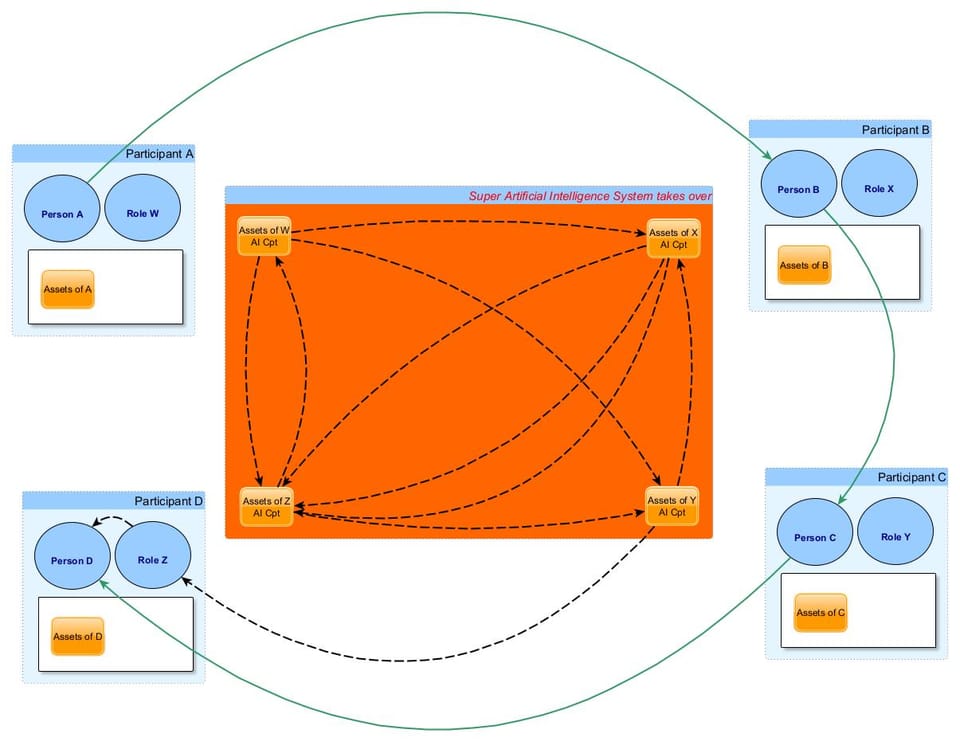First Economic Model (D1b)
See how the first known economic model appeared.

See how the first known economic model appeared. Go back into the 18th century and to France, when a member of the French Society of Physiocrats, Francois Quesney, outlined in 1759 his “Tableau Economique.”
This lay the foundation of the Physiocrats' economic theories and, together with writing and money, they were regarded by Adam Smith, the great British economist at that time, as being the three great inventions that had contributed to the stability of political societies.
More recent analyses of the model help in interpreting the "Tableau," and enable the first value network view of an economic model to be constructed as shown in the following figure.

The diagram shows the three "classes," as role-plays:-
> The Proprietary class - as Landowner (also known as Landlord)
> The Productive class - as Farmer and Farmhand
> The Sterile class - as Artisan and Merchant
Two new role plays are introduced to represent "Markets" as a place for the exchange of goods:-
> Manufactures marketeers and
> Agricultures marketeers
The exchanges of value are shown as transactions with tangible deliverables designated "m" or "g", such that "300 g," for example, means 300 units of goods or services (with further description added as needed) and "300 m" means 300 units of money.
You can also add the sequence of transactions. For example, the first four (1) to (4), transactions follow the assumption made in the model that the Proprietary class spent all they received (!) from renting their land on agricultural and manufactured products, thus keeping the economy working through their "contribution."
Omitted from the value network are the actual stocks of goods and money residing within each group playing the roles. These would be represented, today, in the data tables associated with the work flow implementation of the value network.
What the "Tableau" also omits is all the informal flows that enable societies to function! What we see here is only the mechanical system at work which could, possibly, have influenced Adam Smith to note that the subdivision of labour induced a certain "stupidity of mind," and spurred him to write the "Theory of Moral Sentiments" before his epic "Wealth of Nations!"



